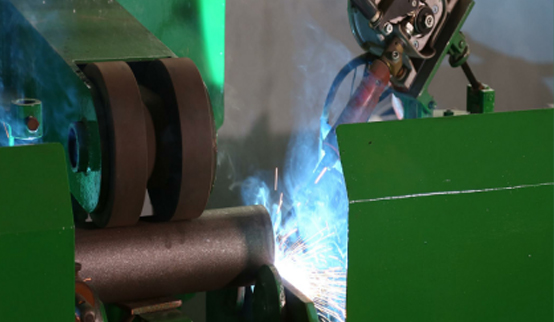 Afrikaans
Afrikaans  Albanian
Albanian  Amharic
Amharic  Arabic
Arabic  Armenian
Armenian  Azerbaijani
Azerbaijani  Basque
Basque  Belarusian
Belarusian  Bengali
Bengali  Bosnian
Bosnian  Bulgarian
Bulgarian  Catalan
Catalan  Cebuano
Cebuano  Corsican
Corsican  Croatian
Croatian  Czech
Czech  Danish
Danish  Dutch
Dutch  English
English  Esperanto
Esperanto  Estonian
Estonian  Finnish
Finnish  French
French  Frisian
Frisian  Galician
Galician  Georgian
Georgian  German
German  Greek
Greek  Gujarati
Gujarati  Haitian Creole
Haitian Creole  hausa
hausa  hawaiian
hawaiian  Hebrew
Hebrew  Hindi
Hindi  Miao
Miao  Hungarian
Hungarian  Icelandic
Icelandic  igbo
igbo  Indonesian
Indonesian  irish
irish  Italian
Italian  Japanese
Japanese  Javanese
Javanese  Kannada
Kannada  kazakh
kazakh  Khmer
Khmer  Rwandese
Rwandese  Korean
Korean  Kurdish
Kurdish  Kyrgyz
Kyrgyz  Lao
Lao  Latin
Latin  Latvian
Latvian  Lithuanian
Lithuanian  Luxembourgish
Luxembourgish  Macedonian
Macedonian  Malgashi
Malgashi  Malay
Malay  Malayalam
Malayalam  Maltese
Maltese  Maori
Maori  Marathi
Marathi  Mongolian
Mongolian  Myanmar
Myanmar  Nepali
Nepali  Norwegian
Norwegian  Norwegian
Norwegian  Occitan
Occitan  Pashto
Pashto  Persian
Persian  Polish
Polish  Portuguese
Portuguese  Punjabi
Punjabi  Romanian
Romanian  Russian
Russian  Samoan
Samoan  Scottish Gaelic
Scottish Gaelic  Serbian
Serbian  Sesotho
Sesotho  Shona
Shona  Sindhi
Sindhi  Sinhala
Sinhala  Slovak
Slovak  Slovenian
Slovenian  Somali
Somali  Spanish
Spanish  Sundanese
Sundanese  Swahili
Swahili  Swedish
Swedish  Tagalog
Tagalog  Tajik
Tajik  Tamil
Tamil  Tatar
Tatar  Telugu
Telugu  Thai
Thai  Turkish
Turkish  Turkmen
Turkmen  Ukrainian
Ukrainian  Urdu
Urdu  Uighur
Uighur  Uzbek
Uzbek  Vietnamese
Vietnamese  Welsh
Welsh  Bantu
Bantu  Yiddish
Yiddish  Yoruba
Yoruba  Zulu
Zulu conveyor assembly
The Role and Evolution of Conveyor Assembly in Modern Manufacturing
Conveyor assembly systems are integral to contemporary manufacturing processes, serving as the backbone for efficient production lines in various industries. These systems enable the seamless movement of materials, components, and finished products, significantly enhancing productivity while minimizing labor costs. As industries evolve, conveyor assembly continues to adapt, incorporating advanced technologies and innovative designs that cater to the demands of modern production.
Historical Context
The concept of conveyor systems dates back to the late 18th century, but they significantly gained prominence during the early 20th century with the advent of the assembly line proposed by Henry Ford. This method revolutionized manufacturing, as it allowed for mass production of goods by streamlining workflow. Conveyors facilitated the movement of materials from one workstation to another, drastically reducing the time and effort required to assemble products. Over the decades, improvements in conveyor design and materials have led to the development of various systems tailored for specific applications, transforming the landscape of manufacturing.
Types of Conveyor Systems
Conveyor assembly systems come in multiple forms, each designed to cater to specific manufacturing needs
. The most common types include1. Belt Conveyors Often used for transporting bulk materials, belt conveyors employ a continuous loop of material to move items along the production line. They are versatile and can handle a wide range of products.
2. Roller Conveyors These systems utilize a series of rollers to transport items. They are particularly effective for handling heavier materials and are common in warehouses and distribution centers.
3. Chain Conveyors Ideal for heavy-duty applications, chain conveyors employ a chain mechanism to move products through the assembly process. They are commonly used in industries like automotive manufacturing.
4. Pneumatic Conveyors These conveyors use air pressure to transport lightweight materials through tubes. They are highly efficient for moving powders and granules in industries such as food processing and pharmaceuticals.
5. Automated Conveyor Systems With advancements in technology, automated conveyor systems incorporate robotics and sensors to enhance efficiency. These systems not only transport products but also assist in sorting and packaging, thereby reducing the need for manual intervention.
conveyor assembly

Advantages of Conveyor Assembly Systems
The integration of conveyor assembly systems within manufacturing processes offers numerous benefits
1. Increased Efficiency By automating the process of transporting materials, manufacturers can significantly reduce production time. This leads to higher output and improved delivery times.
2. Cost Reduction While the initial investment in conveyor systems can be substantial, the long-term savings in labor costs and increased productivity often outweigh the initial financial commitment.
3. Enhanced Safety Conveyor systems minimize manual handling, reducing the risk of workplace injuries. Additionally, automated systems can handle hazardous materials safely, protecting workers and ensuring compliance with safety regulations.
4. Flexibility Modern conveyor systems can be easily reconfigured or expanded to accommodate changes in production volume or product lines. This adaptability is crucial in today’s fast-paced market, where demands can shift rapidly.
Future Prospects
As technology continues to advance, the future of conveyor assembly systems looks promising. The integration of smart technologies such as the Internet of Things (IoT), artificial intelligence (AI), and machine learning is set to revolutionize the way conveyor systems operate. These technologies will enable real-time monitoring and predictive maintenance, minimizing downtime and enhancing overall efficiency.
Moreover, the push for sustainability and eco-friendly practices is leading manufacturers to develop energy-efficient conveyor systems, reducing their carbon footprint while maintaining productivity.
Conclusion
In summary, conveyor assembly systems play a crucial role in modern manufacturing, providing a framework for efficiency, safety, and cost-effectiveness. As industries continue to evolve, the adaptability and technological advancements within conveyor systems will ensure they remain a vital component of production processes. The future promises even greater innovations that will further streamline operations and elevate manufacturing standards globally.
-
Revolutionizing Conveyor Reliability with Advanced Rubber Lagging PulleysNewsJul.22,2025
-
Powering Precision and Durability with Expert Manufacturers of Conveyor ComponentsNewsJul.22,2025
-
Optimizing Conveyor Systems with Advanced Conveyor AccessoriesNewsJul.22,2025
-
Maximize Conveyor Efficiency with Quality Conveyor Idler PulleysNewsJul.22,2025
-
Future-Proof Your Conveyor System with High-Performance Polyurethane RollerNewsJul.22,2025
-
Driving Efficiency Forward with Quality Idlers and RollersNewsJul.22,2025





























